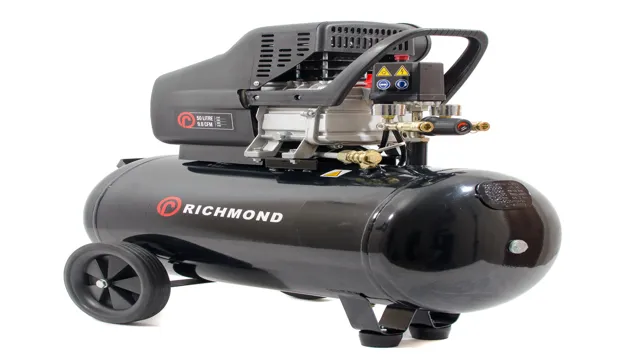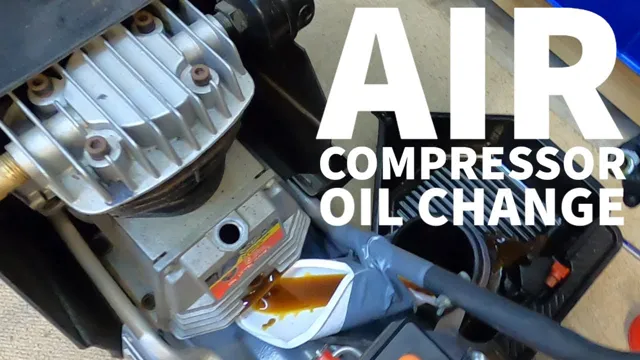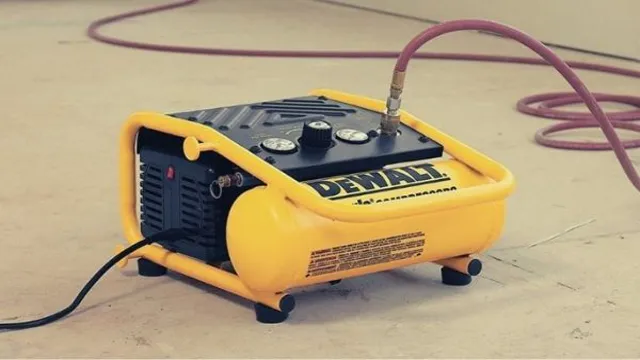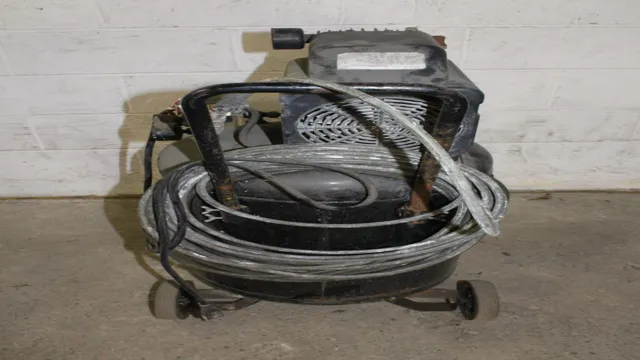What is CFM for Air Compressor: Understanding the Basics to Optimize Performance

When it comes to choosing an air compressor, understanding its CFM rating is crucial in determining its performance and suitability for your needs. CFM, which stands for cubic feet per minute, refers to the amount of compressed air a compressor can deliver in a minute. It is a crucial metric as some tools require a consistent flow of air to function properly.
However, the complexity of the term can leave you wondering what it means and how it affects your air compressor’s performance. In this blog post, we will dive into the world of CFM for air compressors, discussing what it means, how to calculate it, and what CFM rating you need for certain tools. So, fasten your seatbelts, and let’s jump right into it!
Understanding CFM
If you’re in the market for an air compressor, it’s important to understand what CFM is and how it will affect your decision. CFM stands for cubic feet per minute, which is essentially the amount of air that can be pumped out by the compressor. The higher the CFM rating, the more powerful the compressor is.
When selecting an air compressor, it’s important to consider the tools you’ll be using and their CFM requirements. If you plan on using multiple tools at once, you’ll want a compressor with a higher CFM rating to ensure consistent airflow. However, keep in mind that a higher CFM rating also means a higher price tag.
So, it’s important to find a balance between your needs and budget. Overall, understanding CFM is crucial in selecting the right air compressor for your particular needs.
Definition
When it comes to HVAC systems, CFM is a term that is often thrown around. CFM stands for cubic feet per minute, and it measures the amount of air that flows through a space in a minute. Understanding CFM is important when selecting the right HVAC system for your space.
HVAC systems with a higher CFM rating will be able to distribute air more quickly, which is typically beneficial in larger spaces. However, selecting an HVAC system based on CFM alone can be misleading. Other factors such as air velocity and air pressure are important to consider as well.
It’s also important to remember that CFM is just one factor in determining the overall efficiency and performance of an HVAC system.
Importance of CFM
CFM or Cubic Feet per Minute is a crucial measurement that needs to be understood to ensure that your HVAC system is functioning at its best. It is a critical measurement that measures the amount of air that flows through the system in a minute. The higher the CFM rating, the more air that is moving through the system.
Understanding CFM is vital since it can help you choose the right air filter, duct size, install the appropriate HVAC system, and choose the right fan for the system. CFM measures the volume of the air that flows through the HVAC system, and it’s a measure of how effective the system is at cooling or heating the room. Higher CFM means that the system can move more heated or cooled air through the room, making it more effective at maintaining the desired temperature.
In summary, understanding CFM is essential for anyone who wants to ensure that their HVAC system is functioning at its best.
Determining CFM for Air Compressor
If you’re in the market for an air compressor, you’ve likely come across the acronym CFM. But what exactly does CFM stand for? CFM stands for Cubic Feet per Minute and is a unit used to measure the air flow rate of an air compressor. Essentially, it measures how much air the compressor can deliver per minute of operation.
Determining the appropriate CFM for your air compressor depends on your intended use. For example, if you plan to use your air compressor to power pneumatic tools, you’ll want to make sure your compressor can deliver a CFM that matches the requirements of those tools. While it can be tempting to go for the highest CFM possible, it’s important to note that a higher CFM does not necessarily mean better performance.
It’s crucial to choose an air compressor with the appropriate CFM for your specific needs to ensure optimal performance and efficiency.
Calculating CFM
When it comes to choosing an air compressor, it’s essential to determine your required CFM, or cubic feet per minute. This measurement refers to the amount of air that flows through the compressor per minute and is crucial in assessing the compressor’s performance. Calculating the CFM required for your application depends on various factors, such as the tools you’ll use, the amount of air required, and the operating pressure.
You can calculate your CFM by multiplying the tool’s average CFM by the number of tools being used at the same time. Another way to determine CFM is by calculating the amount of air needed to drive the most massive tool you’ll be using. Once you have your calculated CFM, choose an air compressor that can handle your requirements.
Don’t risk overloading the compressor, as you’ll decrease its longevity and damage your tools. It’s always better to choose one size larger than your required CFM to ensure optimal compressor performance.
Factors Affecting CFM
Determining CFM for an air compressor can be affected by various factors that determine the airflow of the compressor. CFM refers to the amount of air that the compressor can produce in one minute. The size of the compressor tank, the horsepower of the motor, and the shape of the compressor pump all play an important role in determining the CFM of the air compressor.
The size of the tank affects the amount of air stored while the horsepower determines the amount of energy available to the compressor. The shape of the pump affects the airflow and influences the CFM rate. Additionally, the altitude can affect the performance of the compressor, as less dense air contains fewer molecules resulting in a lower CFM rate.
While considering these factors, it is important to determine the specific application of the compressor. This will give a better understanding of the CFM required for the job, ultimately selecting the right size and type of air compressor.
Matching CFM to Tools
When it comes to matching CFM to tools, it’s important to determine the CFM for your air compressor. CFM, or cubic feet per minute, measures the amount of air that can be delivered by an air compressor. This is an important factor in determining the size and power of the air compressor you’ll need for your tools.
The CFM required for your specific tools will depend on the tool’s air consumption rate, which can typically be found in the tool’s owner’s manual or online specifications. It’s essential to choose an air compressor with a high enough CFM to power the tools you need to use, as using an underpowered air compressor can lead to inefficiency, decreased performance, and even damage to your tools. By properly matching CFM to your tools, you can ensure that your air compressor is operating at peak performance and that your tools are working efficiently and effectively.
Types of Air Compressors and CFM Ratings
When it comes to air compressors, there are a few different types to choose from. The most common types are reciprocating, rotary screw, and centrifugal compressors. Each type has its own advantages and disadvantages, so it’s important to choose the right one for your needs.
Additionally, when you’re selecting an air compressor, you’ll need to consider its CFM rating. CFM stands for cubic feet per minute and refers to the amount of air the compressor can deliver. This is an important consideration, as you’ll need to make sure that the air compressor you choose can meet your specific requirements.
For example, if you need to power tools that require high CFM ratings, you’ll need to choose an air compressor with a high CFM rating. A lower CFM rating, on the other hand, might be fine for smaller jobs. Ultimately, the right air compressor and CFM rating for you will depend on your specific needs and the tasks you need to complete.
Reciprocating Air Compressors
Reciprocating Air Compressors Air compressors come in different types and sizes, and each has a rating that determines its performance. One of the most popular types of air compressors is the reciprocating air compressor, which works by using a piston and cylinder to compress air. Reciprocating air compressors are classified based on their size or horsepower rating and their CFM or cubic feet per minute rating.
The CFM rating defines how much air the compressor can deliver at a specific pressure and temperature. A higher CFM rating means that the compressor can deliver more air in less time, which is essential for industrial applications that require high volumes of compressed air. Reciprocating air compressors are popular in workshops, construction sites, and other areas where compressed air is required for tools or other applications.
It’s important to choose the right size and CFM rating for your specific needs to ensure optimum performance. Overall, reciprocating air compressors are versatile and reliable, making them a popular choice for many applications.
Rotary Screw Air Compressors
When it comes to air compressors, there are various types available in the market. One of the most popular types is the rotary screw air compressor which is known for its high efficiency and continuous operation. This type of compressor uses two rotors to compress air, resulting in a steady flow of compressed air.
Rotary screw air compressors come in different sizes and power ratings, with CFM (cubic feet per minute) ratings ranging from 50 to 5,000 CFM. It’s important to choose a compressor with the right CFM rating based on the intended use and workspace size. A higher CFM rating means that the compressor can deliver more compressed air per minute, making it ideal for large industrial applications.
However, it’s crucial to note that a higher CFM rating also means a higher cost and power consumption. In conclusion, when choosing an air compressor, it’s essential to consider the type and CFM rating based on the intended use and workspace size to ensure optimal performance.
Centrifugal Air Compressors
Centrifugal air compressors are a popular type of air compressor used in various industries like manufacturing and construction. They operate on the principle of centrifugal force to increase the pressure of the air. There are two types of centrifugal air compressors- oil-free and oil-injected.
Oil-injected compressors use oil to cool and lubricate the moving parts, while oil-free compressors use other methods like water or air for cooling. The CFM rating of a compressor indicates the amount of air it can deliver at a specific pressure level. The CFM rating is an essential factor to consider while choosing an air compressor as it determines the amount of compressed air the tool requires to function correctly.
The higher the CFM rating, the more powerful the compressor is, making it suitable for heavier tasks. Therefore, it’s crucial to select a compressor with the appropriate CFM rating according to the application. Overall, centrifugal air compressors are an excellent choice for large-scale industrial applications due to their high efficiency and reliability.
Conclusion
In conclusion, CFM, or cubic feet per minute, is the measure of the volume of air that flows through an air compressor. Think of it as the air equivalent of a stream’s flow rate. Just as a fisherman needs a certain flow rate to catch trout, a tool user needs a certain CFM to efficiently power their air tools.
So, if you want to be a master of your domain, it’s important to understand CFM and ensure your air compressor can keep up with your demand for power. Happy tooling!”
FAQs
What does CFM stand for in air compressors?
CFM stands for “cubic feet per minute,” which is a measurement of the amount of air that an air compressor can deliver in a minute.
Why is CFM important for air compressors?
Knowing the CFM of an air compressor is important because it tells you how much air the compressor can deliver to power tools or other devices that require compressed air to operate.
How do you calculate the CFM needed for your air tools?
To calculate the CFM needed for your air tools, add up the CFM requirements of each tool, then add around 30% to account for losses in the air lines and fittings.
What if my air compressor doesn’t have enough CFM for my tools?
If your air compressor doesn’t have enough CFM for your tools, you can either upgrade to a larger compressor or use fewer tools at once to stay within the compressor’s capacity.
Can you have too much CFM for your air tools?
Yes, having too much CFM for your air tools can be wasteful and potentially harmful to the tools. It’s important to match the CFM of the compressor to the needs of the tools.
What other factors should I consider when choosing an air compressor based on CFM?
Other factors to consider include the PSI (pounds per square inch) of the compressor, the horsepower of the motor, and the size of the compressor tank.
Are there any tips for optimizing the CFM of my air compressor?
To optimize the CFM of your air compressor, make sure to use high-quality air hoses and fittings, keep the compressor well-maintained and clean, and minimize the length of the air lines between the compressor and the tools.




